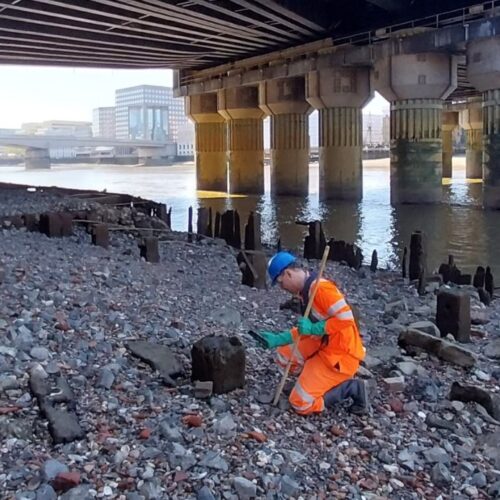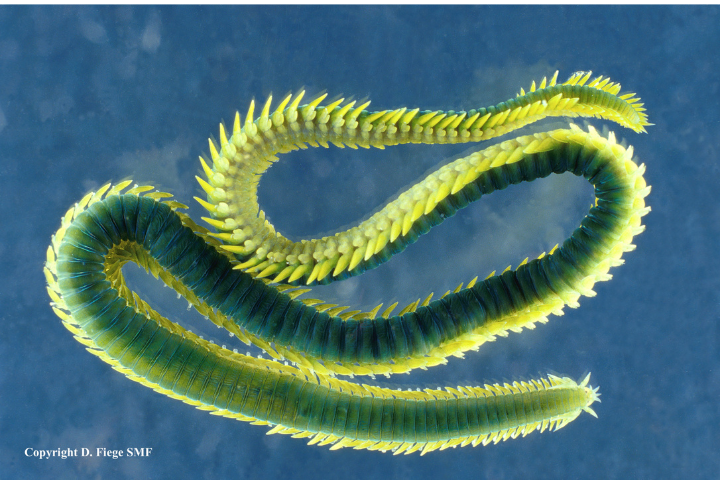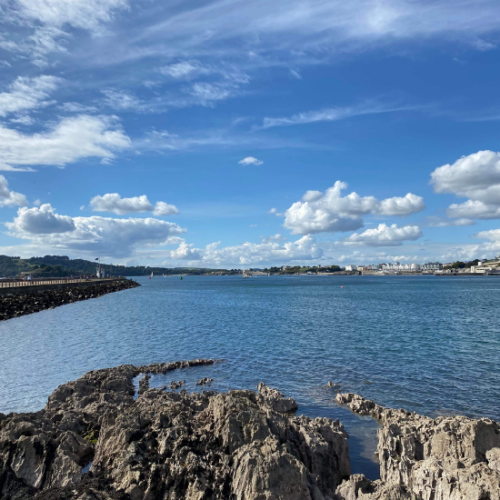In June this year we announced the discovery of our new polychaete species Ampharete oculicirrata Parapar, Moreira & Barnich, 2019 from a marine protected area on the West Shetland shelf. Dr Ruth Barnich, Principal Scientist in Thomson‘s marine team, answers the question she is being asked by many -“How did you discover it?” – She tells the story of how this little worm famous for having eyes in its bottom was dis-covered and describes the huge team effort behind it.
It all starts at sea
It all started with the scientists at the Joint Nature Conservation Committee (JNCC) and Marine Scotland Science, who are responsible for monitoring the designated marine protected area on the West Shetland shelf. At the end of 2017 they sent a survey team on board the research vessel MRV Scotia to collect samples from the seabed.
Samples arriving at our laboratory to be analysed
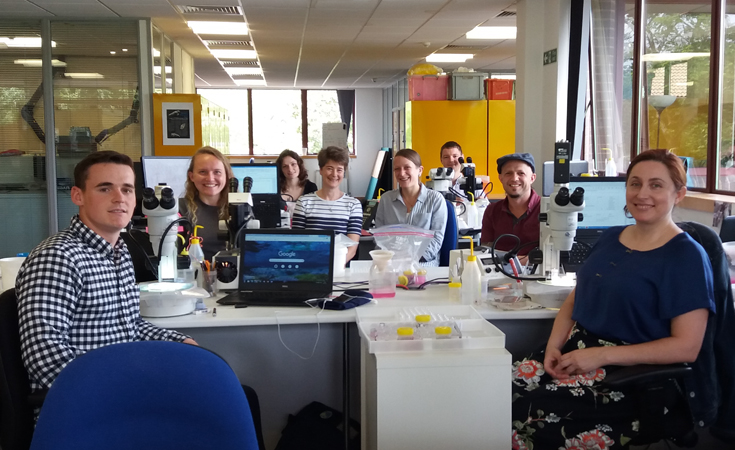
Once the samples had been collected, they were sent straight from the ship to our laboratory in Guildford, arriving in big buckets and preserved in formalin.
Washing the samples
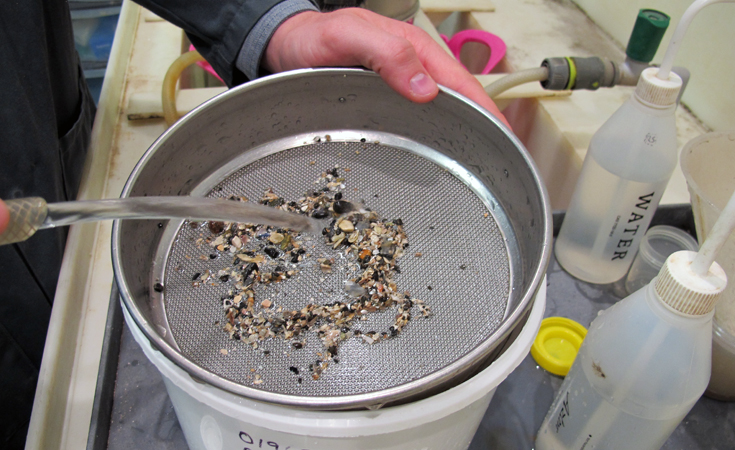
Our team first washed the samples to get rid of the formalin, sieved them to extract the larger animals, and transferred them to alcohol for further extraction under the microscope.
Under the microscope
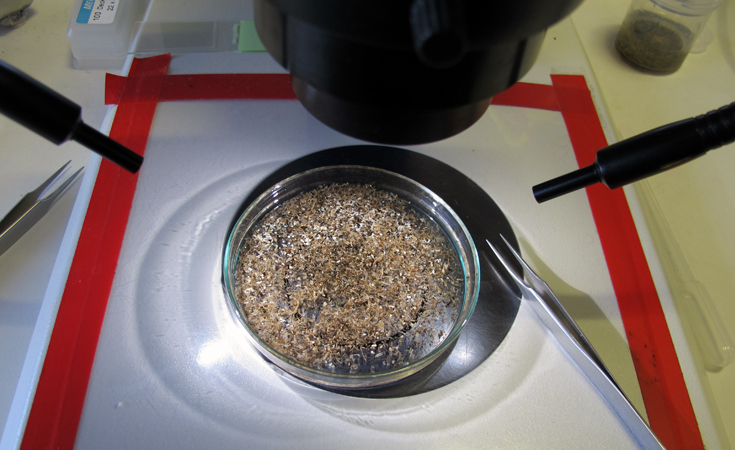
The animals were then identified by our team‘s analysts. However, upon checking, they could not find a name for the Ampharete specimens in the samples. As the Principle Scientist, I verified their identifications and could see that they were clearly belonging to the genus Ampharete but did not fit any recent species descriptions.
Consulting the other experts

Luckily, I knew that my Spanish colleagues Julio Parapar (University of La Coruna) and Juan Moreira (Autonomous University of Madrid) had recently conducted most of the research on this worm genus. So, after having sent them my notes and several of the animals, I was very excited when they confirmed my opinion that these animals represented a new species!
Formally describing the new species
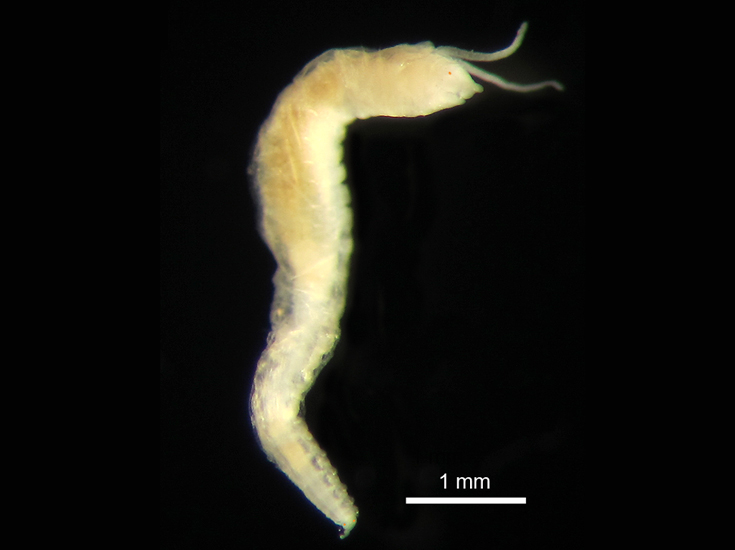
With Julio as lead author, the three of us prepared a description and figures of the new species and agreed on the new name Ampharete oculicirrata, which means Ampharete with “eyes in the cirri” (situated at the posterior end of the animal).
We prepared a manuscript with the formal description of the new species and a discussion of the characters, which set it apart from other species in the genus. The designated type specimens were then deposited in several collections – the main type and majority of animals at National Museums Scotland, and additional material at the National Museum of Natural History Spain and the Senckenberg Natural History Museum Frankfurt. This ensures that animals of the new species are available for future comparative studies.
Publishing the new species
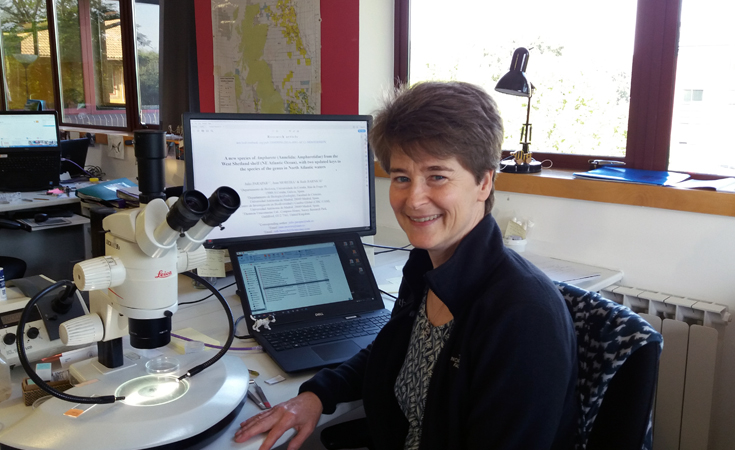
The manuscript was then submitted to the European Journal of Taxonomy and reviewed by two anonymous colleagues chosen by the editor. We included their comments and the paper was finally published at the beginning of June 2019.
For the new name to be officially recognised by the International Code for Zoological Nomenclature, it had to be registered with their website, ZooBank. It was then forwarded to the responsible editor at WoRMS (World Register for Marine Species) – the authoritative database that provides a comprehensive list of all described marine organisms.
Telling the world
Finally, the marketing teams of all institutions involved, worked together to launch a joint press release to make the public aware of our exciting new discovery. Press coverage reached Australia and India and was also featured on the BBC Science and Environment landing page.
Some of the slogans born from the discovery included “worm with eyes in its head and its bottom”. Others were more amusing! Nonetheless, coverage was far and wide and very positive.
Despite the success behind the discovery of Ampharete oculicirrata, it is not the first species I have discovered and described so far. However, it’s certainly enjoyed some of the best media coverage.
I want to take this opportunity to thank everyone involved. Without their contributions, the world would not be aware of this new species.
How we can help you
Our marine team have over 30 years’ experience in providing specialist support for both off-shore and near shore monitoring projects and developments. Our marine taxonomists are experts in the analysis of marine macrobenthic samples, with full laboratory facilities at their disposal. If you have any marine analysis requirements, please get in touch with us today.


